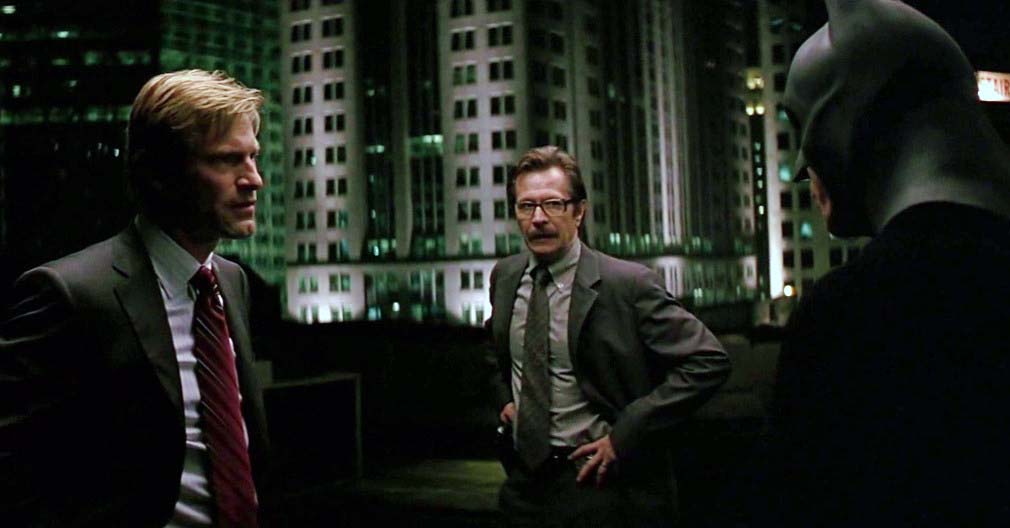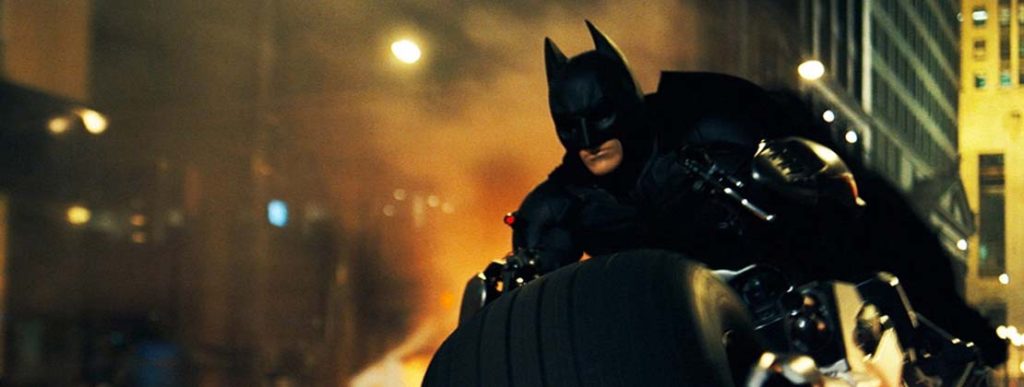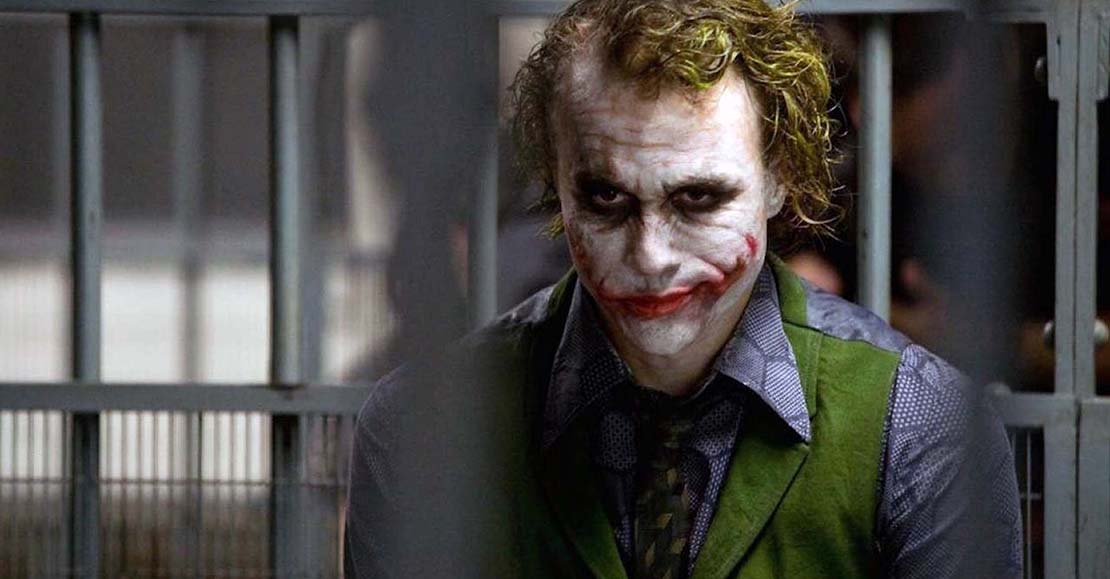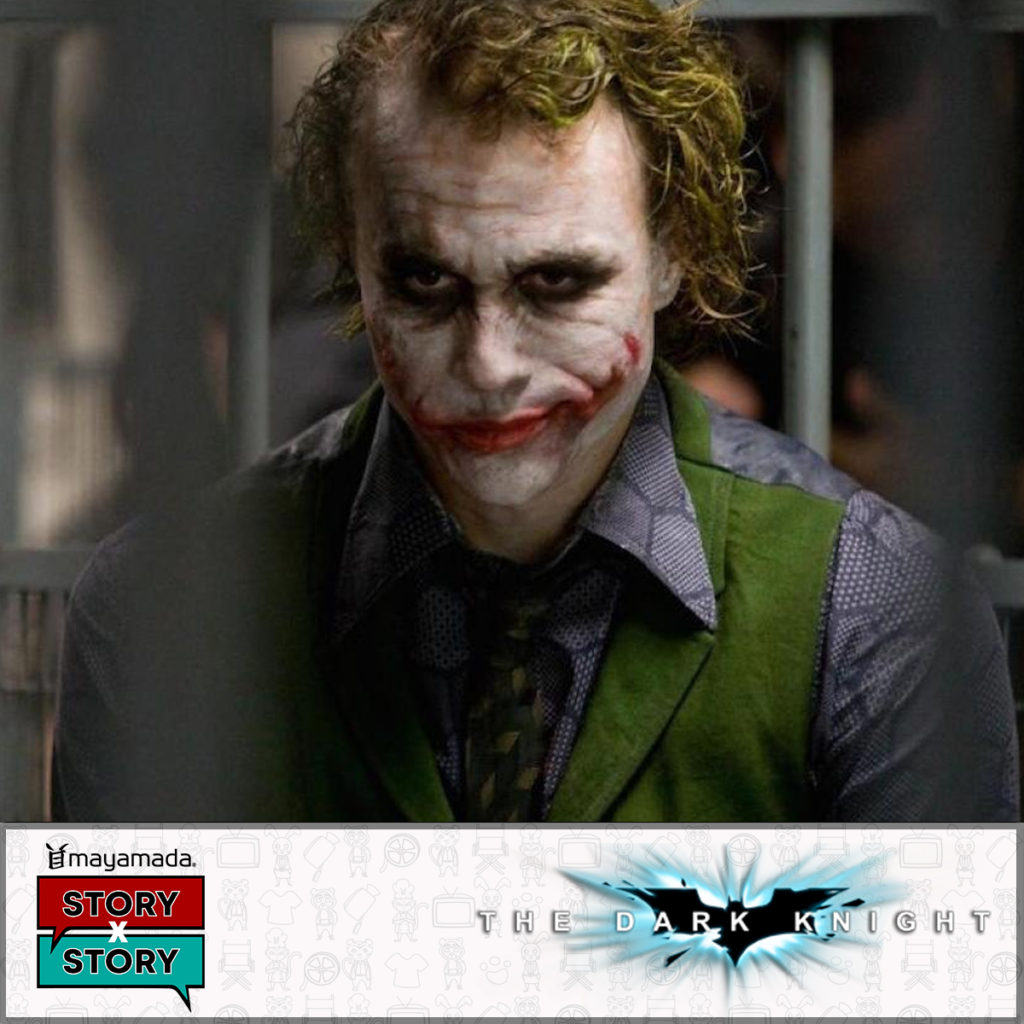Story x Story Tip: The Right Villain For Your Hero (The Dark Knight)
For episode 23 of Story x Story, we invited Greg Driver from Ace Comicals for a deep dive into The Dark Knight. The second in Christoper Nolan’s trilogy of Batman films is one of the best comic book adaptations around so I was very excited to get into discussing this story.
Greg is extremely well versed in the comic book material that inspired the film. Both Tazziii and myself got great insight, in addition to one of the best analogies to describe those comic influences.
The storytelling tip centres around the relationship between Batman and the Joker. Specifically, the need to develop the right antagonist for your story’s protagonist.
The Making of a Good Villain
Much of what makes The Dark Knight so fascinating is the Joker. But it’s not only the incredible (and ultimately tragic) performance by Heath Ledger. The Joker represents the perfect villain for Batman in this story. This is achieved in a few ways:
Binary Opposites – This is a theory that can be found in many narratives and deals with concepts that cannot exist together. Some examples include good vs evil, rich vs poor, modern vs traditional, lower vs upper class and so on.
In The Dark Knight, Batman represents order and the Joker chaos. The two cannot co-exist, and the clash of ideals forms the basis of their protagonist-antagonist relationship and conflict throughout the film.

Additional depth is added to the narrative technique by way of four corner opposition. I’ll discuss this in more detail for a future post, but essentially it’s the process of creating extra opposition for your hero outside of the main villain.
As well as the Joker, Batman/Bruce Wayne faces opposition from District Attorney Harvey Dent and Commissioner James Gordon. The conflict between these four characters provides additional depth to the story’s narrative and the protagonist’s journey.
But back to our villain…
Forces of antagonism – Your antagonist shouldn’t just be opposed to your hero. They must force the protagonist into increasingly difficult choices throughout the story. This is how your protagonist will learn and change over their character arc.
For example, Bruce wants to give up being Batman so he can be with Rachel Dawes. He also wants Harvey Dent to take up the mantle of Gotham’s protector. The Joker puts him in a position where he is forced to save one or the other.
Later in the film, Batman is again forced to cross the line when he instructs Lucius Fox to engage in a massive invasion of privacy by setting up a city-wide surveillance system.
This is what makes the story interesting, having your protagonist pushed into making tougher and tougher choices to achieve their goal. This is something that can be tough as a storyteller as you’ll have to overcome your natural instinct to protect your protagonist!
More than physical conflict – Your protagonist and antagonist shouldn’t just fight for the sake of fighting. They should be competing for the same goal, a goal that only one of them can achieve.
The goal in The Dark Knight is actually spoken by the Joker when he asks Batman: “You didn’t think I’d risk losing the battle for Gotham’s soul in a fist fight with you?”
Doing this right means you don’t always need to go for a “save the world” level plot. The entirety of The Dark Knight takes place within Gotham city limits, and the resolution comes down to a scene in which the Joker pits two ferries – one carrying civilians and the other carrying convicts – against each other to see
It’s not quite Avengers: End Game level scale, but absolutely crucial to what is at stake in this film; the soul of Gotham. The stakes in your story can be relatively small scale but still incredibly meaningful in the context of your story.

The Dark Knight Storytelling Tips
Here are a few things to remember when considering the relationship your antagonist has with your protagonist, and narrative as a whole:
1) Understand what your film is really about. What ideals does the narrative represent and do your protagonist and antagonist reflect them?
2) Really push your protagonist. You’re going to have to put your hero in a really tough situation as a result of the actions your antagonist takes over the course of your story. It can be tough, but will make for a better story!
3) Conflict isn’t just physical. Your antagonist and protagonist should be fighting over more than just who is the stronger. Their conflict should be related to their ideals and the themes of your narrative.
The Joker is a great villain, not because of his look or Ledger’s acting ability, but because he fits so well for THIS specific protagonist. Let us know what you think, and be sure to subscribe to Story x Story to catch all future episodes.


